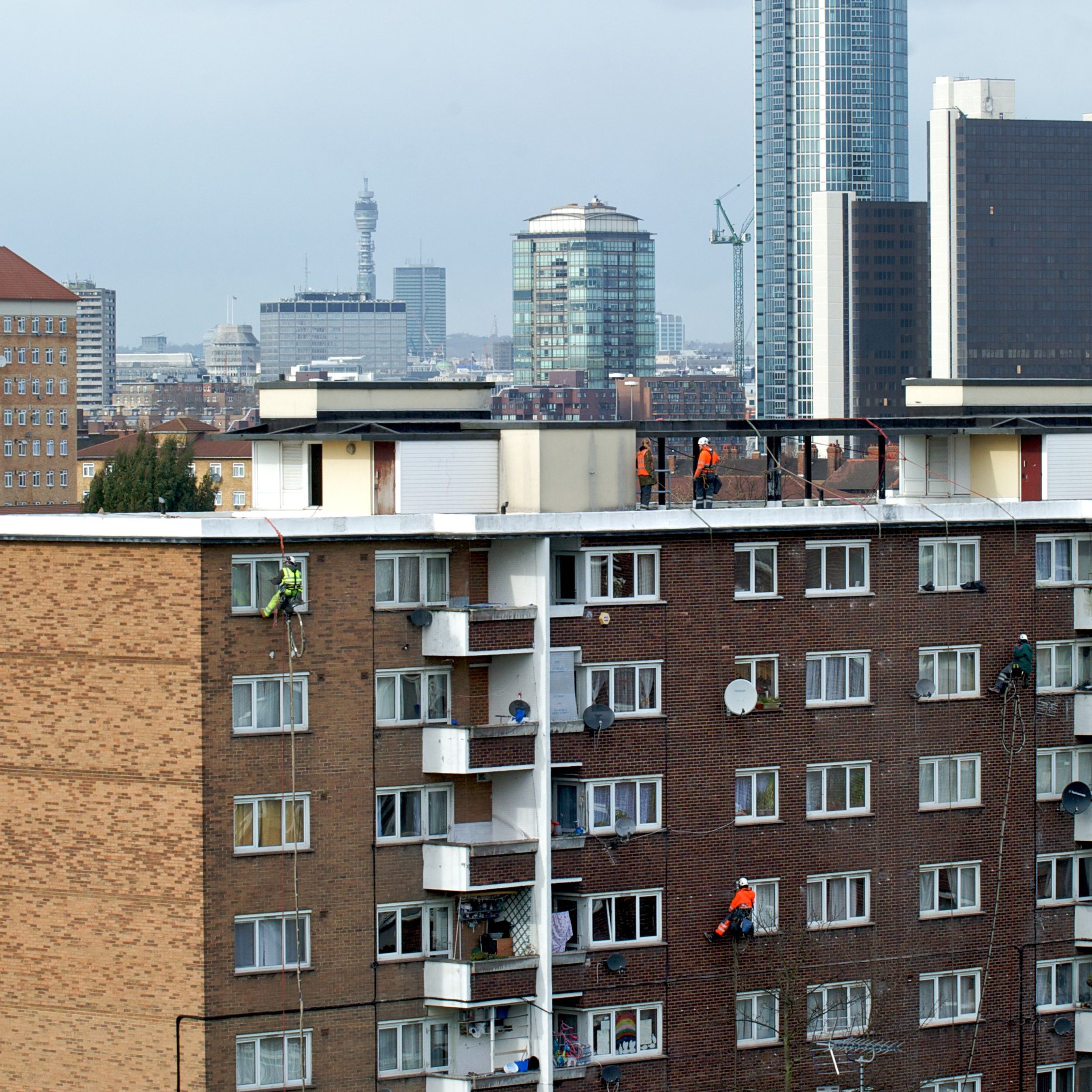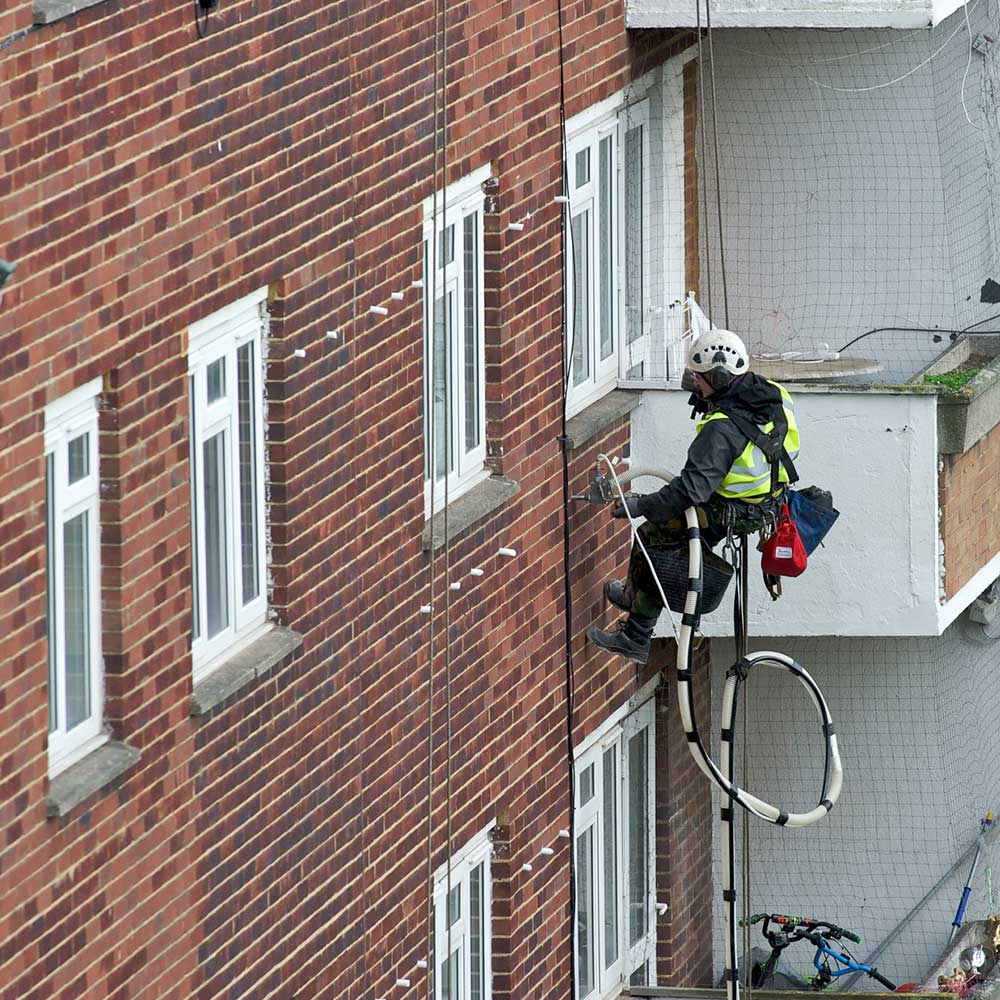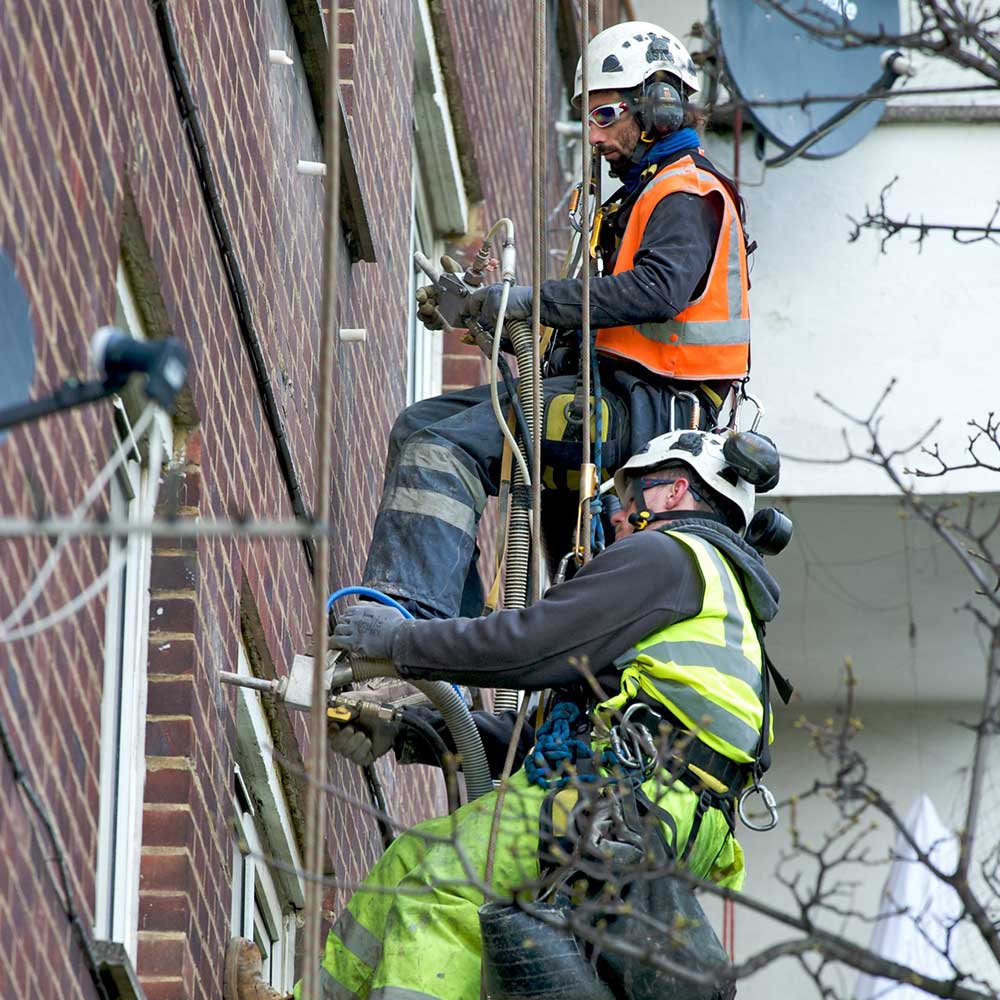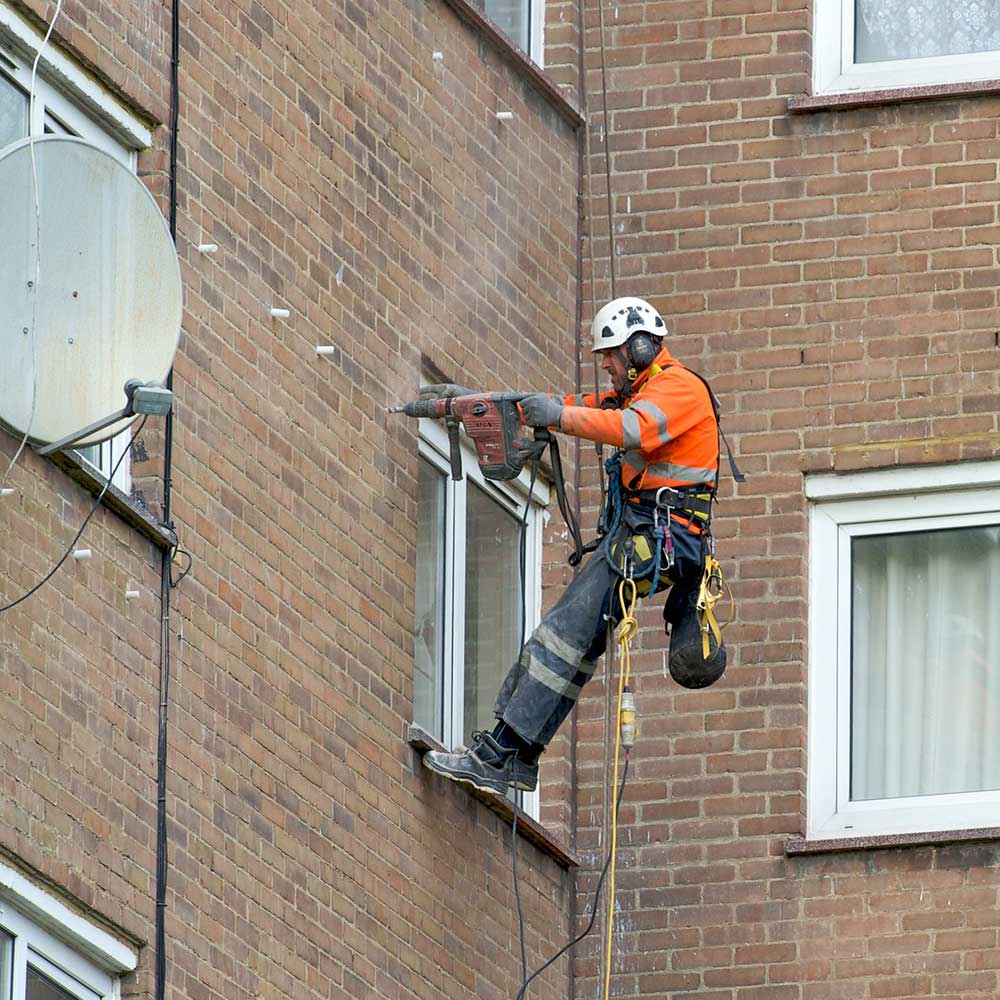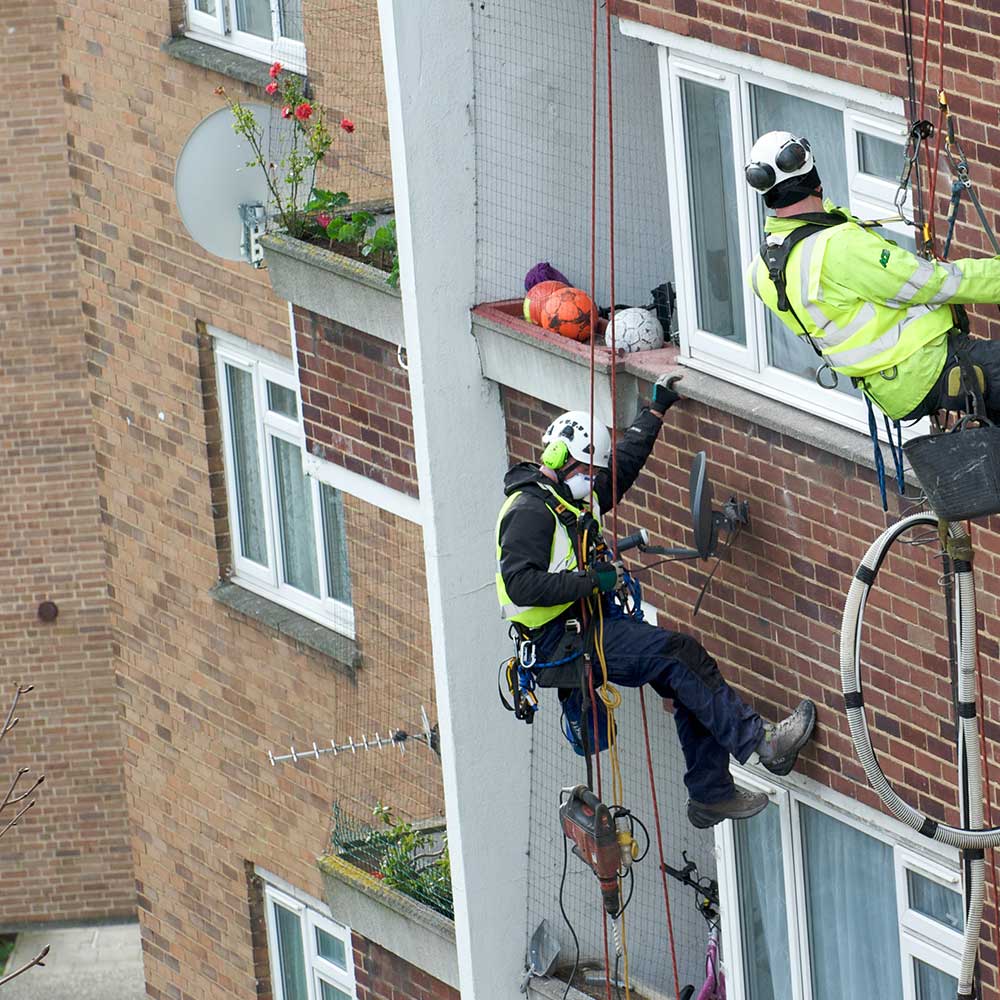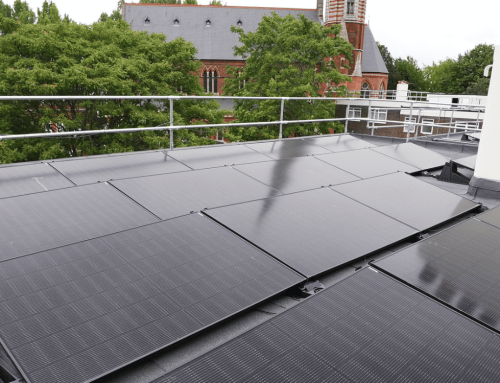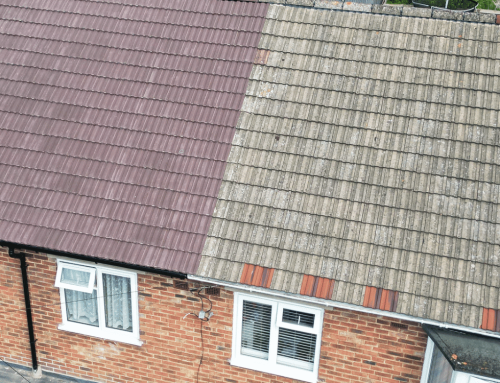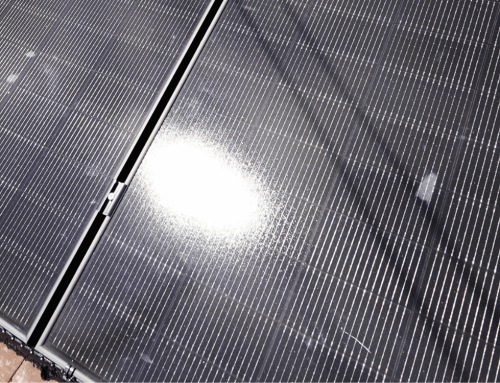The Hyde Group
Client Name
Housing
Sector
Stockwell, London
Location
Cavity Wall Insulation
Category
This cavity wall insulation was valued at £600,000 across a 12-week duration
This Hyde cladding project was valued at £600,000 across a 12-week duration
Project Details
Axis and the Hyde Group, with funding from E.ON Energy, have completed cavity wall insulation work on 725 properties. Our housing division utilised an abseiling method to complete the drilling, insulation and plugging process.
This installation method is estimated to have reduced the project costs by more than 45%, compared with the traditional scaffold access. This meant that our funding was stretched to cover 23 buildings instead of 12. We also sped up the project delivery timescale by abseiling, with a 65% drop-in time required, and it had a lower environmental impact than introducing scaffolds to the area. We helped reduce the project’s carbon footprint, as well as delivering greater energy efficiency in the homes.
Our team installed cavity wall insulation which reduced the (fuel burning) energy required to heat each home by over 15%. This will achieve a saving of over 11,500 tonnes of carbon over the lifespan of the insulation. On average, the properties receiving insulation had their energy efficiency improved from Band D (rating 68) to Band C (rating 80). The average energy efficiency rating in England is Band D (rating 60).
Within this cavity wall insulation work, our housing sector team targeted blocks where a high number of social housing residents fell into the fuel poverty category. The improved thermal insulation will directly benefit residents by making homes easier and more affordable to heat with an average annual saving of £113 on fuel bills per household. One resident living at Mobey Court commented:
I couldn’t be happier, there was very little disruption. I’m very satisfied and have already noticed that the flat is warmer. I would recommend this to everyone.
Project Details
Axis and the Hyde Group, with funding from E.ON Energy, have completed a cavity wall insulation project on 725 properties. Our housing division utilised an abseiling method to complete the drilling, insulation and plugging process.
This installation method is estimated to have reduced the project costs by more than 45%, compared with the traditional scaffold access. This meant that our funding was stretched to cover 23 buildings instead of 12. We also sped up the project delivery timescale by abseiling, with a 65% drop-in time required, and it had a lower environmental impact than introducing scaffolds to the area. We helped reduce the project’s carbon footprint, as well as delivering greater energy efficiency in the homes.
Our team installed cavity wall insulation which reduced the (fuel burning) energy required to heat each home by over 15%. This will achieve a saving of over 11,500 tonnes of carbon over the lifespan of the insulation. On average, the properties receiving insulation had their energy efficiency improved from Band D (rating 68) to Band C (rating 80). The average energy efficiency rating in England is Band D (rating 60).
One resident living at Mobey Court commented: I couldn’t be happier, there was very little disruption. I’m very satisfied and have already noticed that the flat is warmer. I would recommend this to everyone.
Within this cavity insulation work, our housing sector team targeted blocks where a high number of social housing residents fell into the fuel poverty category. The improved thermal insulation will directly benefit residents by making homes easier and more affordable to heat with an average annual saving of £113 on fuel bills per household.



